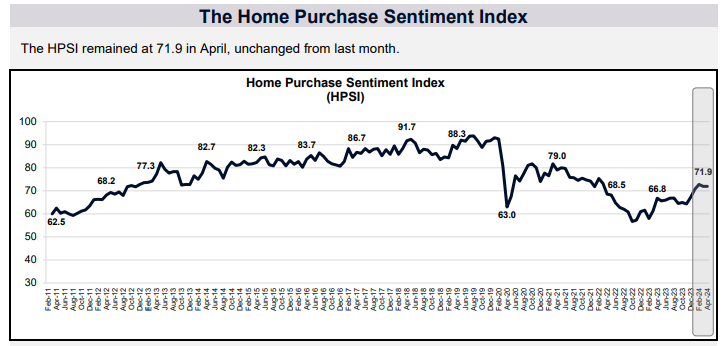Advertisement
Home Prices See 1.6 Percent Nationwide Quarter-Over-Quarter Decline

Clear Capital has released its Home Data Index (HDI) Market Report with data through the end of January 2012. The report finds that year-over-year home prices for the U.S. lost 2.6 percent through January; quarter-over-quarter home prices declined 1.6 percent nationwide; the market in the Midwest lost its momentum and led the nation in quarterly losses; and that remaining regions had little change quarter-over-quarter and year-over-year, with the Western region of the nation in recovery mode.
“Looking at the latest data through January, home prices remained relatively unchanged with the exception of the Midwest,” said Dr. Alex Villacorta, director of research and analytics at Clear Capital. “Although prices at the national level continue to slide due to pressure from the Midwest, the lower priced segments of several specific markets are bucking the trend and seeing appreciation, suggesting that recoveries could be occurring from the bottom up."
National home prices bucked three months of stability and posted a loss of 1.6 percent quarter-over-quarter, more than a full percentage point in lost value compared to last month’s decrease of 0.4 percent. On a year-over-year basis, the nation lost a more significant 2.6 percent, due in part to market seasonality and an increase of real estate-owned (REO) sales as a percentage of total home sales, from 24.8 percent at the end of 2011 to 25.4 percent at the end of January.
The Northeast region remained essentially flat over last month’s report with a very mild quarterly loss of 0.7 percent, and year-over-year growth of 0.1 percent. This region has been resilient over time with relative stability in year-over-year and quarterly numbers, but also boasts overall losses of just 22.5 percent since the height of that market’s value in 2006, as compared to the national average of 40.5 percent in losses since the nation’s peak.
The Southern and Western regions posted similar and mild price quarter-over-quarter changes, with 0.9 percent losses each and price decreases of 1.8 percent and 3.5 percent respectively year-over-year.
After consistent weakness throughout 2011, the West reduced its year-over-year losses by nearly a full percent when compared to last month’s results of -4.4 percent. This change can be partly attributed to decrease in REO sales from 38 percent in the first quarter of 2011, to a healthier 31 percent today.
In contrast, the Midwest saw the most significant change in overall performance with quarterly losses of four percent against a mild 0.4 percent loss reported last month. This is the first time in seven months this region leads the nation in quarterly losses. These shorter-term declines pulled down its year-over-year returns to -5.2 percent, a marked increase from the softer three percent loss reported last month. This drop in values can be partly attributed to a 1.5 percent uptick in REO saturation over the past quarter from 29.5 percent to 31 percent.
"When we look at the strength in the bottom tier of prices, the volatility within the metro markets, the rapid changes in direction with certain regions, and relative stability in others, these factors underscore the economic and market fragility that remains a dark cloud over housing prices,” said Dr. Villacorta.
All of the top performing MSAs avoided quarterly losses this month; however a third of these markets posted mild quarter-over-quarter gains of less than one percent, and only three gained more than two percent. This month’s leaders are showing growth consistent with the past two months, topping out in the mid four percent range.
The Birmingham-Hoover, Ala. MSA in Alabama took the lead this month with 4.3 percent growth quarter-over-quarter. This market is also showing marked improvement in its year-over-year performance, improving from losses of 11.1 percent year-over-year in last month’s report to just 2.2 percent this month. The drivers for this market’s strong performance include significant gains in its lower-tier segments (homes worth $63,000 and less), distressed asset sale prices, and a reduction in REO saturation to 32 percent from a high of 40 percent in 2011.
The Phoenix MSA is also on the move with 3.2 percent quarterly gains, and a 4.5 percent increase in prices year-over-year. Similar to Birmingham, the Phoenix market has shown signs of a recovery starting with the low tier segment (homes worth $82,000 and less), in price increases for distressed sales, and a deep reduction in REO saturation rate of over 15 percent since the start of 2011 to a still high, but more reasonable 32 percent. However, Phoenix has experienced severe declines since the market peak of over 61 percent and has a lot of ground to make up.
This month’s low performing MSAs showed clear weakness as compared to the same group last month, with all metros posting losses greater than 1.5 percent, and 60 percent with losses of more than three percent quarter-over-quarter. On a yearly basis, a full 13 of these 15 markets are showing losses greater than three percent, with an average REO saturation rate of 28.5 percent.
The Detroit MSA was pummeled this month with quarter-over-quarter losses of 15.5 percent, and over twice the amount of depreciation than second place Milwaukee. Detroit’s total losses since the peak of the market are a staggering 77 percent, so this month’s results are painful for an already troubled market. Detroit also experienced a 9.7 percent increase in REO sales over last quarter to a staggering 51.8 percent. Although prices are still 10.8 percent above their lowest point in 2009, the domination of REO sales in the Detroit MSA signals values will continue to face an uphill battle.
The Dayton, Ohio MSA lost a bit of prominence this month, losing 4.5 percent of its value quarter-over-quarter, and moving from one of the highest performing metros last month to the sixth lowest this month. This market also saw a two percent jump in its REO saturation up to 32 percent overall, well above the national average. This volatility is not unusual for Dayton, having experienced value swings of more than five percent in 10 out of the last 17 quarters. But despite the rapid drop, Dayton is experiencing some strength in its low priced segment of homes (under $36,000), as they have seen an uptick of 0.8 percent quarter-over-quarter, and 6.6 percent year-over-year.
About the author





